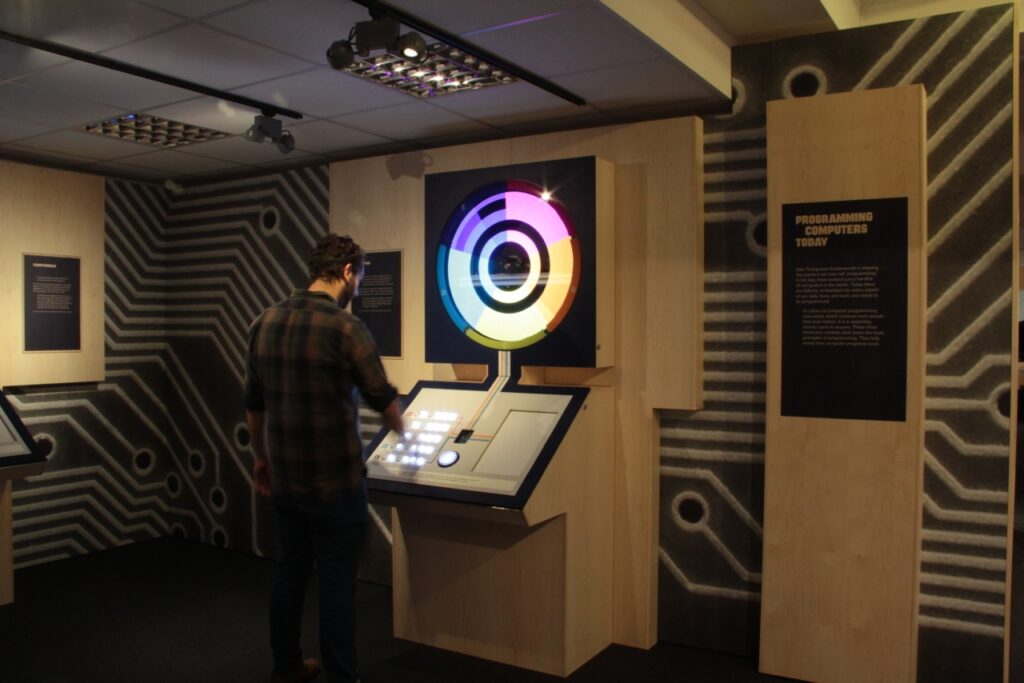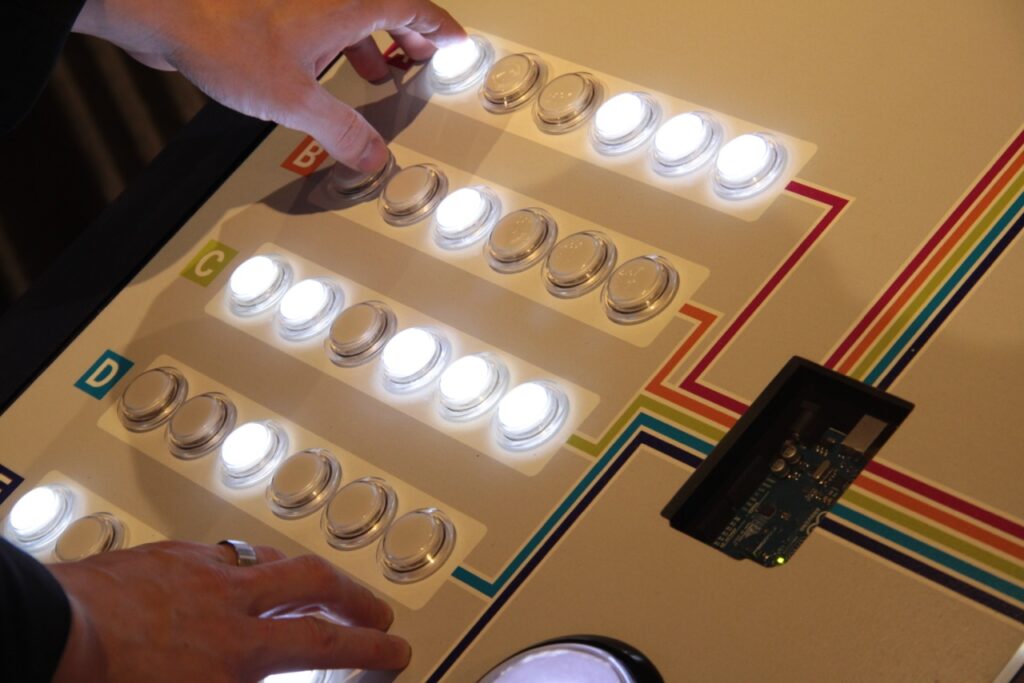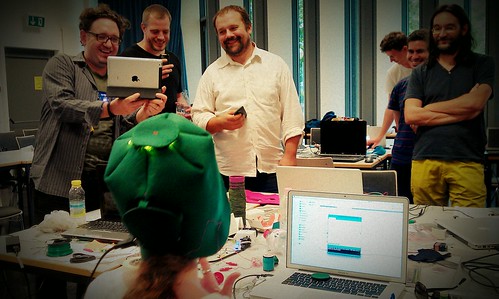The Funky Chicken
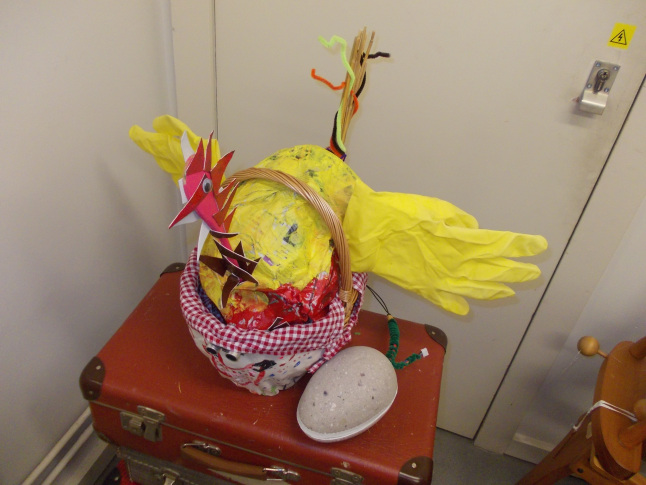
The Funky Chicken was created during a series of workshops that were given as part of the larger project “Interactive Sensory Objects Designed for and by People with Learning Disabilities”:
It was designed by Rumena, a student from the Reading College LLD/D course (people with learning disabilities) who attended the workshops on a regular basis. She made the papier mache chicken, painted it and added the frills and ornaments, and wanted it to sit inside a basket but flap it’s wings and cluck. We helped her to complete this artwork by adding the necessary electronics including an Arduino Uno, Adafruit Waveshield, speaker and a servo to make the wings flap.
The whole flapping/clucking of the chicken is triggered using a sonar attached to Arduino Uno. Moving within 1m of the chicken will trigger it:
In the image below the sonar is hooked up to the Arduino Uno, and the Arduino is connected to the servo controller (not shown). The sonar is a very inexpensive off-the-shelf HC-SR04, which has a range of about 3m.
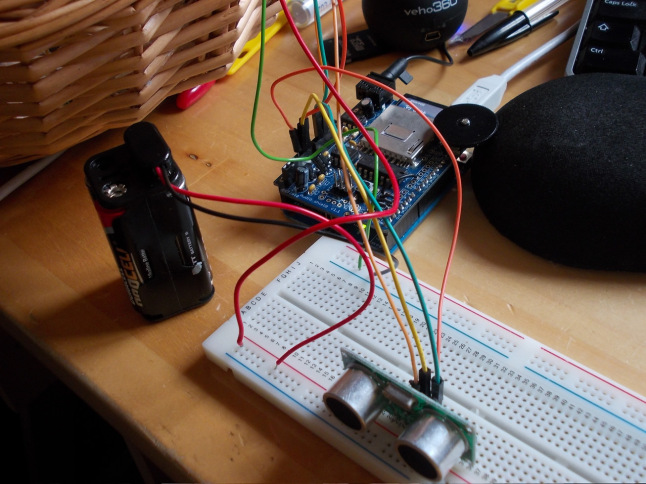
Here’s the video with the chicken at work:


